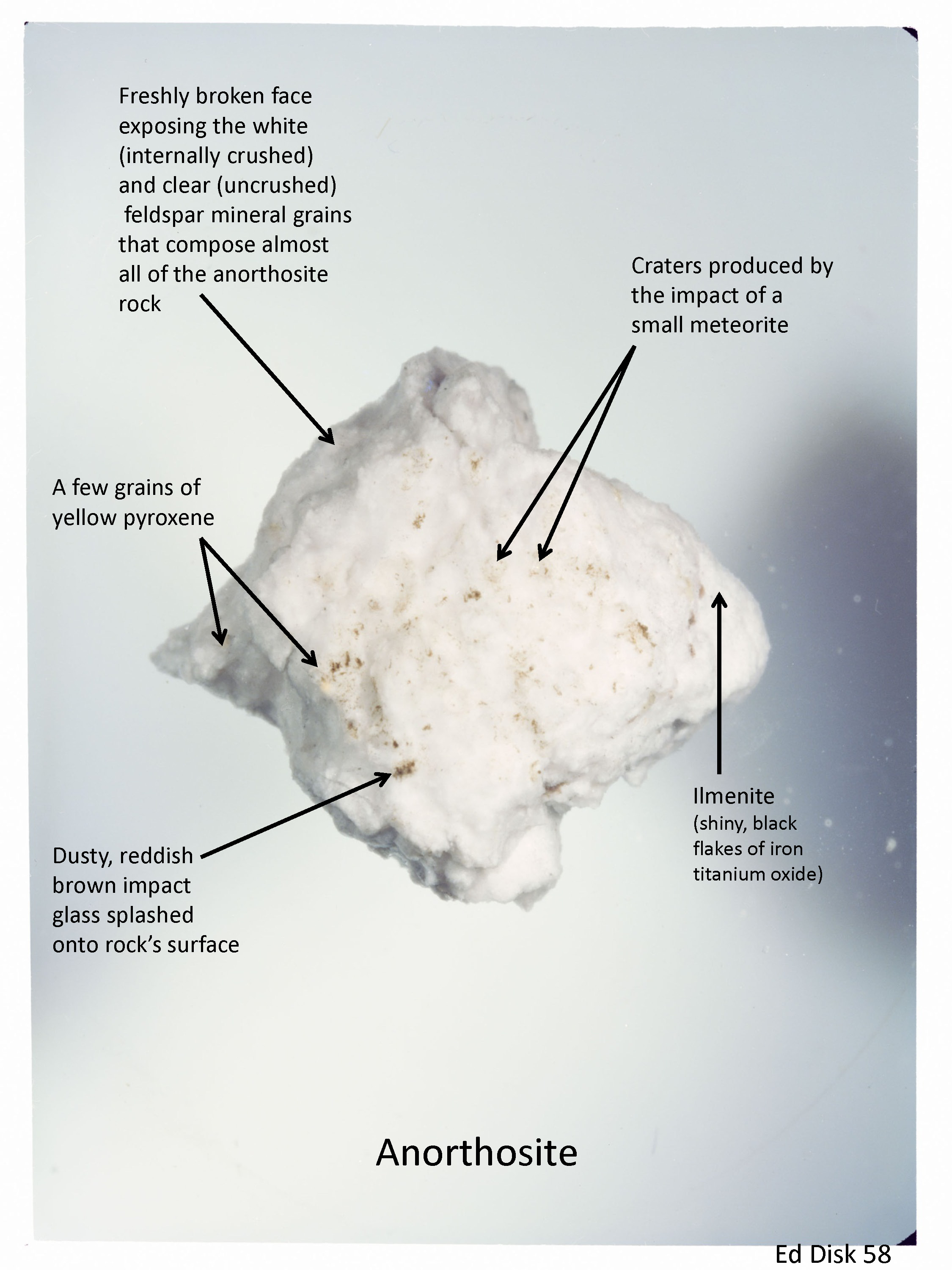Lunar Disk 58: Anorthosite
This white rock is composed almost entirely of crystals of one mineral, feldspar. Rocks like this make up much of the Highlands of the Moon, where feldspar produces the light color. Shortly after material gathered together to form the Moon, the outer Moon melted. As the melt cooled, feldspar crystals formed and floated (like ice cubes in water) upward to form the Moon’s crust. At first the feldspar crystals were pale gray or colorless. Then meteorites collided with the Moon and broke up its crust into fragments, and shocked and shattered the feldspar crystals so they are now white. The brown coating on the rock is glass melted and splashed onto the rock surface by the impacts of small meteorites. The small circular pit on the rock surface was formed when a meteorite struck the rock blasting out material, and also melting some of it to line the resulting crater with glass.
The chip in this disk weighs about 1 gram was removed from a 1832 gram (4 lb.) rock, number 60025. The Apollo 16 astronauts found the rock loose on the surface where they landed in the Descartes region of the light colored highlands near the center of the Moon.


